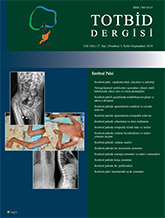
Knee problems which affect the motor performance are very essential starting from the early stages of life in cerebral palsy. The surrounding muscles of knee are composed of two-joint muscles, therefore all knee joint disorders should be regarded as multi-level problems. The etiology of crouch gait in CP is the shortening of hamstring whereas the reason for the stiff knee gait is the stiffness in rectus femoris muscle. The aim of the treatment is controlling the muscle tension and shortening, improving the range of motion, restoration of the muscle strength, decreasing the energy consumption, improving the independency in the daily living activities and the quality of life. Physiotherapy and rehabilitation, botox injections and medications are some of the options for preserving and improving sensory and motor functions at the early stages; whereas, surgical methods are used in the secondary musculoskeletal problems later on. For successful treatment, the pathological mechanisms should be fully understood, and individualized treatment plans should be prepared with correct musculoskeletal assessments and examinations.